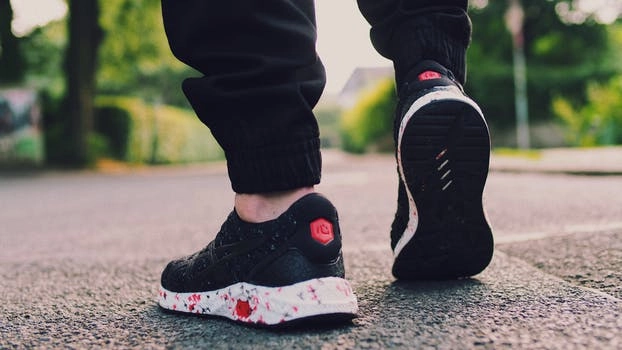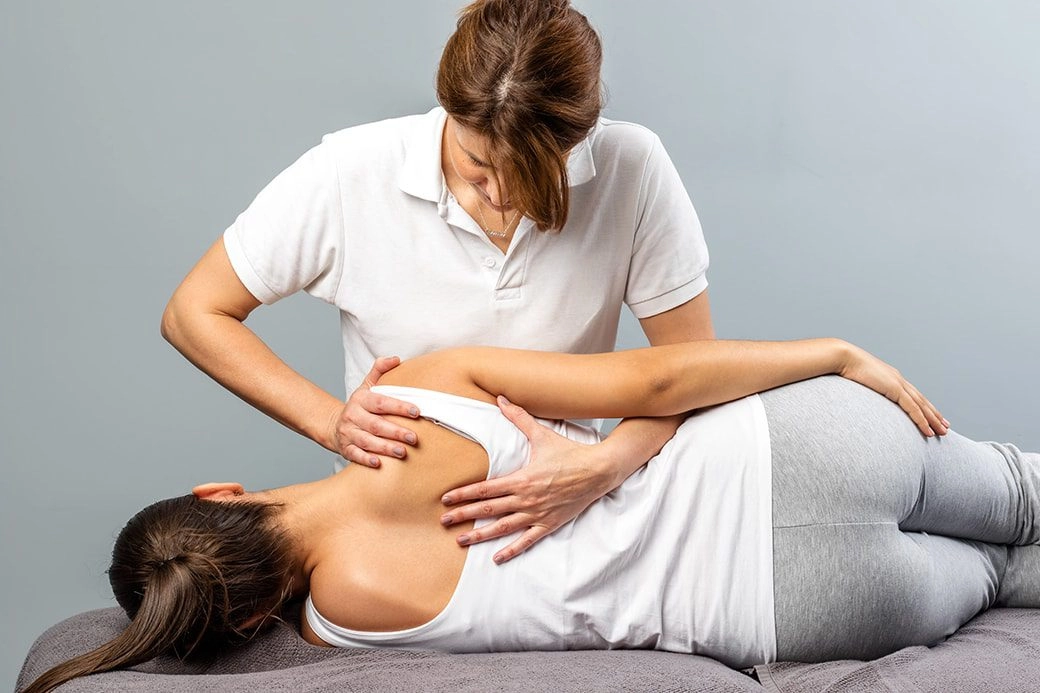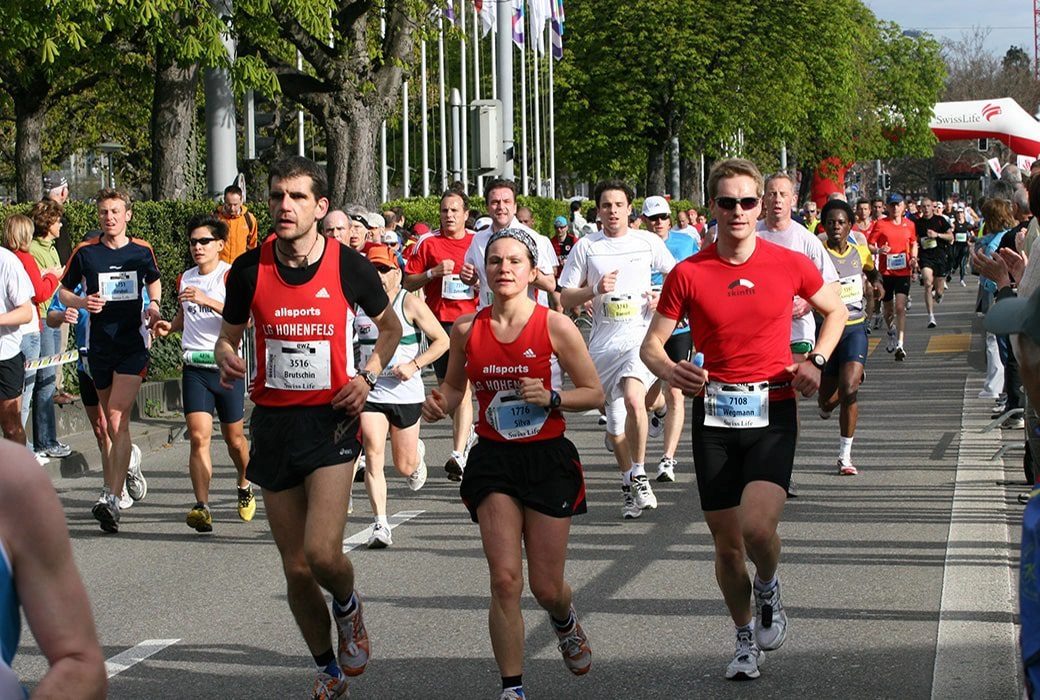Did you know back pain is one of the most common injuries in the world? Estimates say that, 80% of Americans will feel back pain, especially low back pain. This is also true for runners.
If you have felt no discomfort, lower back tightness while running, or pain in your upper back after running, we can almost guarantee you will at some point in the future.
The Amazing Human Back
When you realize that there are over 200 muscles in the back alone, not to mention bones, discs, joints, ligaments, connective tissue, and our central nervous system, taking good care of our backs, rather than taking them for granted, seems to make perfect sense.
All the above pieces of anatomy work together to enable us to stand upright, bend in half, and do a number of amazing things.
We may never know which one of our ancestors decided to stand up straight to walk, but our backs still don’t seem to have quite caught on to this idea, since they can be easily damaged when not cared for the way they should.
Back Pain is More Complicated Than You Think
Sometimes, an MRI or X-ray can show severe damage to the back, such as a ruptured disc, but other times, it can be hard to tell what the source of pain is.
Could it be a sprained joint? A vertebra that’s out of alignment? Is it a strained muscle? (or more than one strained muscle?) Could it be due to inflammation, torn ligaments, or overly tight connective tissue?
Getting to the root of back pain needs a specialist. Your local chiropractor can help to determine the source or root cause of your back pain, especially for runners.
How Can Runners Avoid Back Pain?
Runners in Juneau have several tactical moves they can take to prevent back pain from ever rearing its ugly head and preventing you from running. You know the saying an ounce of prevention…? This is true when it comes to protecting your back.
Keep reading to learn the best tactic moves you can take so you can complete a marathon and never wonder if your back will make it the entire route!
Tactical Move #1- Practice Core Exercises
Strong core muscles are vital to prevent injury to the lower back. A study done in 2018 found that runners who had weak core muscles were more likely to have back pain, especially lower back pain.
Why do core muscles matter so much? Our transverse abdominal muscles, which are very deep inside the body, hence the name “core”, go in and around the spine and abdomen. These stabilize the entire midsection of the body, both front, and back.
When one set of muscles is weak, other muscles in the body are forced to take up the load. When our core muscles are weak, it’s the back muscles that must take over.
Thanks to our desk jobs and long commutes, most people have weak core muscles. At first, some of the exercises to strengthen these muscles seem difficult, but the good news is that they build up quickly.
Some of the best core strengthening exercises for the runner are:
- The Modified Bicycle
- The Balance Plank
- Single Leg Glute Bridge
- The Supine Bridge Leg Lift
- Modified Bird Dog
- The Superman Pose
You can look these up on YouTube to see how the exercises should be properly performed.
If you are unsure about which exercises would be best for you, your Juneau chiropractor can help you determine which can help strengthen these important muscles and avoid hurting your back in the process.

Tactical Move #2-Improve Your Form with Gait Training
Juneau runners know you can do everything right, but one tiny injury can put a kink in your routine for weeks.
You can do everything the doc orders as well; get rest, do stretching exercises, strength train those core muscles and still….your little injury keeps returning or won’t improve.
More than likely, what you need is to improve your form with gait training.
Your chiropractor can give you a runner’s assessment. This is a simple tool that provides your doctor with a great deal of information. You can do this test at your chiropractor’s office or at home. If you choose to do so at home, simply set up your phone or video camera so your entire body will fit inside the frame. Use the slow-motion setting. Now hop on the treadmill and run for about 5 minutes. Use whatever pace you normally would when you run.
Take your video to your chiropractor for analysis. Your video might be short, but it will provide valuable information that your doctor can use to help improve your form.
Every runner is different, but common form problems include:
- Foot placement ahead of center mass
- Decreased knee flexion angle
- Over striding
- Crossover gait
- Increased hip adduction angle
For runners with low back pain but only on one side, you might discover that its due to your arm position. A head that juts forward when you run can cause pain in the upper back. Your video will reveal a great deal of information and you will wonder why you didn’t try this sooner!
Learning to run differently will feel strange in the beginning, but like everything else, once learned, you will probably never revert to your original gait, which was causing you harm and preventing minor injuries from healing.
Tactical Move #3-Improve Your Posture
Your mother probably spent years telling you to stand up straight or sit up straight and although it was annoying, she was right.
Bad posture is perhaps one of the major culprits behind back pain for runners and while your mother had the right idea, posture is much more than simply keeping your shoulders back or sitting all the way back in a chair.
Your posture is affected by your strength and mobility. With gravity constantly doing its job of pushing down on us, the muscles of the body must make small contractions to keep the body in what is called neutral alignment. This means keeping joints in the middle of their range of motion and not locking our knees when standing or pushing our lower backs into the sofa with our heels and jutting the head forward to check out our phone.
Maintaining a neutral spine is difficult, but not impossible. Many runners find that strengthening their core muscles and being more aware of their posture is enough to correct it with practice. Others will need a bit of guidance, which is where your chiropractor can come in handy.
Almost everyone has a slightly different shape to their back so finding the perfect posture with a neutral spine can be a challenge. Your chiropractor in Juneau can help show you the best position for your posture and show you how you can check yourself throughout the day, so it becomes a habit.
Tactical Move #4-Improve Your Flexibility
Like strong core muscles, many runners have poor flexibility. This is due in part to office jobs, but it is also because most runners only think about warming up muscles and not stretching them.
Tight hamstrings can cause low back pain. By stretching your hamstrings (which are the long muscles that run down the back of each thigh) you can greatly reduce the amount of pressure on the pelvis.
Another common problem area for runners is a lack of full range of motion at the hip joints. When the range of motion of the hip socket is limited because of tightness, the back will be pulled out of position, causing pain.
There are stretching exercises which will help to eliminate this source of back pain. Ask your chiropractor which stretching exercises you should do and how to properly perform them to protect your lower back when running.
You can also do Pilates, yoga, and resistance bands to stretch and strengthen quads, hamstrings, legs, and calves.

Tactical Move #5-Long-Term Tips
There are also some long-term tips that runner should incorporate into their lives to prevent back pain every day, not only when you are running.
✓ Don’t overtrain. Run only 4 days per week and allow one day per week of complete rest
✓ Cross train. Alternate running days with strength training and stretching exercises, such as yoga
✓ If you want to increase mileage, don’t add more than 2 miles each week.
✓ Don’t try to increase both mileage and speed at the same time. Work on one, then on the other
✓ See your Juneau chiropractor regularly to ensure that your spine and joints are in proper alignment

✓ Always warm up before a run and cool down after a run, even when you are in a hurry
✓ Don’t overdo the foam rollers
✓ Wash your running shoes, but never put them in the dryer which can cause deformities
✓ Replace your shoes every 300-500 miles
✓ If you run downhill a lot, you need strong core muscles. Improve your abdominal muscles and/or limit the number of downhill slopes on your route.










